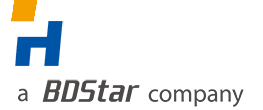The geospatial industry has seen exponential growth in the adoption of unmanned aerial vehicle (UAV or ‘drone’) solutions in recent years, particularly in surveying and mapping applications. Photogrammetry has recovered from a decline during the analogue era and benefited massively from the light digital sensors on versatile UAVs. Innovative technologies and more integrated, customer-friendly solutions have enabled photogrammetry to stay on the radar of industry professionals. Today, photogrammetry is increasingly capable of meeting demands for faster, more precise and efficient data collection.
At the turn of the century, the survival of photogrammetry depended on its ability to adapt in the face of more innovative, competing technologies, such as airborne and terrestrial laser scanners (ALS and TLS) and other multi- and hyper-spectral sensors of remote sensing. This need was driven primarily by a growing demand for faster, more efficient and reactive data collection and imaging, with traditional photogrammetric methodologies like analogue cameras on manned aircrafts falling out of favour. This growth in demand has coincided with the rise of UAVs in the geospatial sector, which has played a significant role in changing the future direction of surveying.
Aside from serving as a more cost-effective alternative to manned aerial mapping systems, the precision and efficiency that drones provide has enabled them to become an essential surveying solution. Precise positioning is becoming the standard for UAVs, allowing highly detailed and highly accurate outputs in record time.
Indeed, advances in photogrammetric technologies have enabled this field to complement the rise of drones in the geospatial industry. For instance, there are now photogrammetric cameras that are lightweight and agile enough for use on drones during flights. camera which produces detailed, vivid orthomosaics and highly precise digital surface models (DSMs). More complex and higher-quality camera sensors have also enabled a continuum, in terms of ground sampling distance (GS) and angle of view, ranging from nadir to oblique to horizontal to zenith.
Continued innovation
While developments have been crucial in enabling drones to thrive in the geospatial arena, further innovation is required to allow UAV surveying and mapping to continue its upward trajectory. Development of real-time processes is also expected to help streamline drone mapping techniques, further supporting faster image capture, processing and analysis.
With greater awareness of the benefits of drones in commercial applications, including agriculture, mining and humanitarian aid, it is vital that hardware providers continue to innovate. One way in which this can be achieved is through investment in strategic partnerships between hardware and software companies, to enable drones to become integrated, decision-making tools, able to inform project feasibility and operation. With ease of use being more important than ever, such partnerships will also facilitate greater interoperability and more holistic processes, supporting customers from data collection through to analysis and enabling smarter workflows.
Moving forward
As drone adoption becomes more widespread, safety is inevitably a key consideration for surveying and mapping professionals. Since the first European UTM Day in Geneva in 2017, global attention on unmanned traffic management (UTM) has increased significantly, with greater and safer access to airspace being an important focus for drone providers.
Today, the need for more integrated, dynamic UAV surveying and mapping methodologies is greater than ever, while traditional imaging techniques like photogrammetry are increasingly capable of meeting demands for faster, more precise and efficient data collection. Greater interoperability of processing and analysis software with UAV technology looks set to play a key role in ensuring that the geospatial field remains dynamic, while supporting more complete, end-to-end UAV solutions for industry professionals.
Source:https://www.gim-international.com/content/article/precise-positioning-the-future-of-uav-mapping

